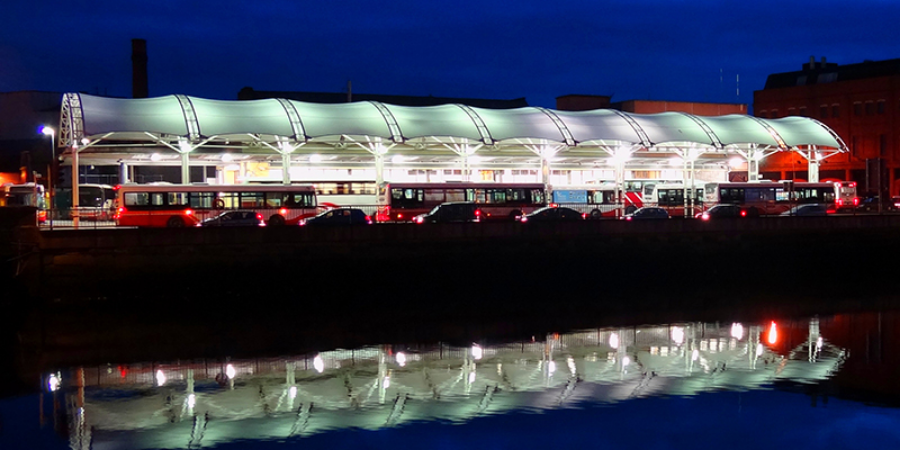
Tensile Structure Design and Material FAQs

If you’re thinking of investing in a tensile fabric structure for the first time, you probably have several questions about the design process and choice of materials. To help, read our answers to tensile structure FAQs.
What Shapes Can I Use?
The saddle and the cone are the two main components that make up the shape of tensile fabric structures. Saddles are created by warping a rectangular grid into an orthogonal surface. They can also be distinguished by their two high and two low points. In contrast, cones resemble a volcano shape that is created using radians and hoops. Tensile fabric structures are very versatile; the cone and saddle can be used independently or combined to form a beautiful piece of architecture unique to your business.
How Long do Tensile Structures Take to Design?
The design process of tensile architecture is similar to conventional buildings. For the Design Development (DD) phase of the project, it is important to know what the loads on the foundations are going to be. This means design of the tensile structures must start in Schematics or at the beginning of the DD phase. As the tensile structure is prefabricated, its construction starts off site, to be added to the main building towards the end of the project. The actual installation on site is generally a quick process.
Can you Integrate Tensile Structures with Regular Buildings?
Yes! Specialist tensile fabric structure manufacturers have the expertise to design a structure that fits seamlessly to existing buildings. You might want to add a canopy over the entrance to a building to create a covered walkway or seating area. Another popular application is the use of curtain walls as cladding for atria and courtyards. Tensile structures also make great stand-alone pavilions or pop-up stalls, such as the DHL fan activation zone for the 2019 Rugby World Cup produced by J & J Carter.
What is Tensile Fabric Made of?
Our tensile fabric structures are usually made with one of three types of fabric:
1. For over 40 years, PVC polyester has been a go-to fabric for thousands of tensile structure projects across the world. Not only is it cost-effective, but it’s also easily to transport if structures are only temporary. Top films or coatings can be applied to keep the fabric clean during its 10 – 20-year lifespan. PVC polyester meets building codes as a fire-retardant product, with light translucencies ranging between 0 to 25%.
2. PTFE glass fabrics are inert and last for 30 years. One of the biggest benefits of this type of fabric is that most building codes consider it non-combustible, and it isn’t damaged by UV light. The PFTE coating ensures the fabric stays clean, and translucency can reach 40%. Unlike PVC polyester fabric projects, PTFE glass fabrics are only used for permanent structures which cannot be moved after installation, like the canopy at Cork Bus Station.
3. For internal applications, choose PVC glass fabrics. They meet B.S 476 Class 0 for Fire Code and are often used for interior tensile sails, which are designed to reduce glare in atria.
Talk to an Expert Tensile Fabric Structure Manufacturer
If you have more tensile fabric related questions, don’t hesitate to get in touch with J & J Carter. Our team of tensile design and engineering experts have the knowledge necessary to build fabric structures bespoke to your specific needs. They can support you in a number of areas, including design and modelling, testing and membrane cutting. Begin your project with us today!
